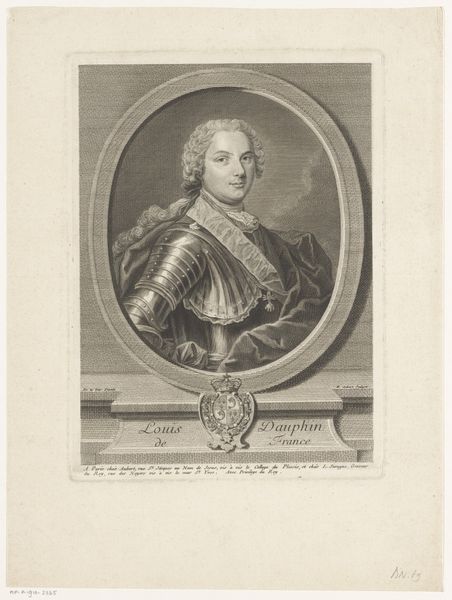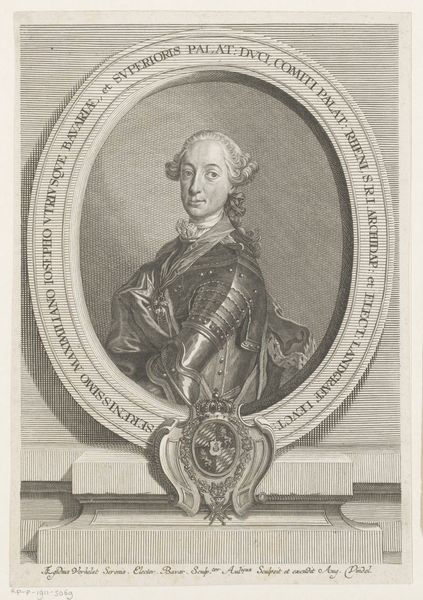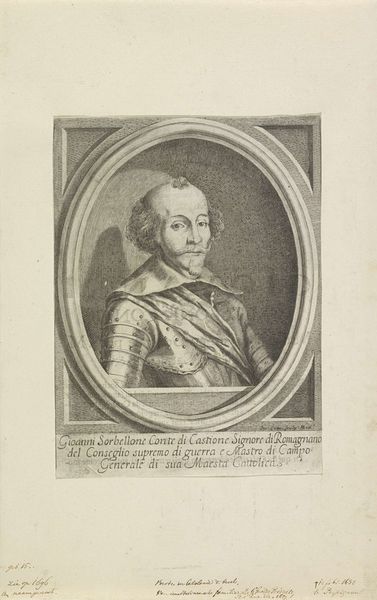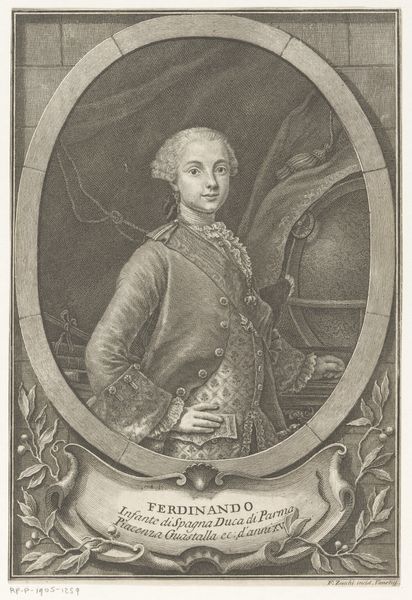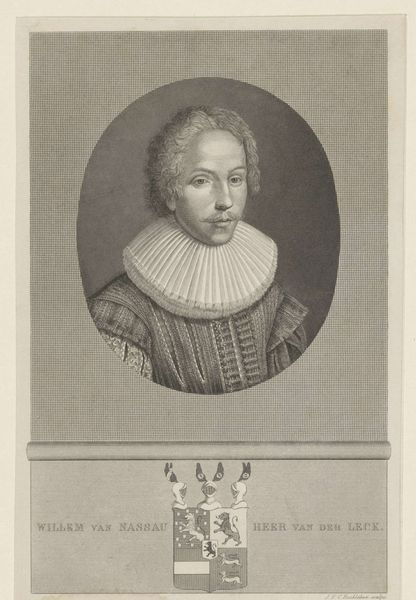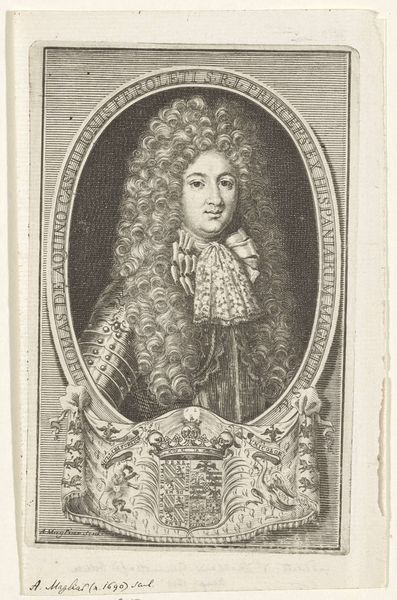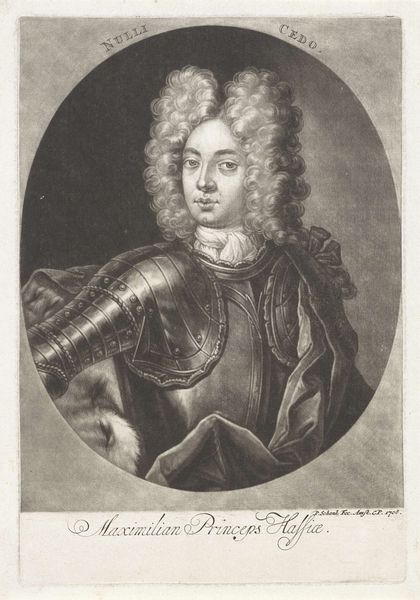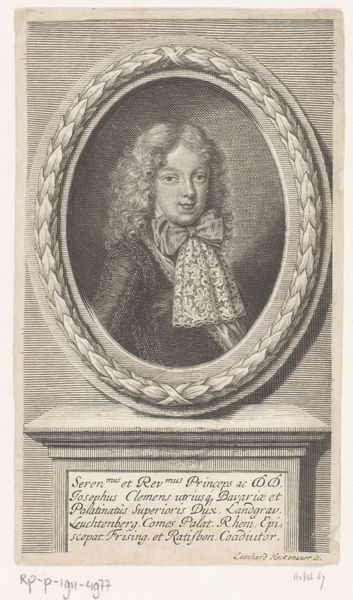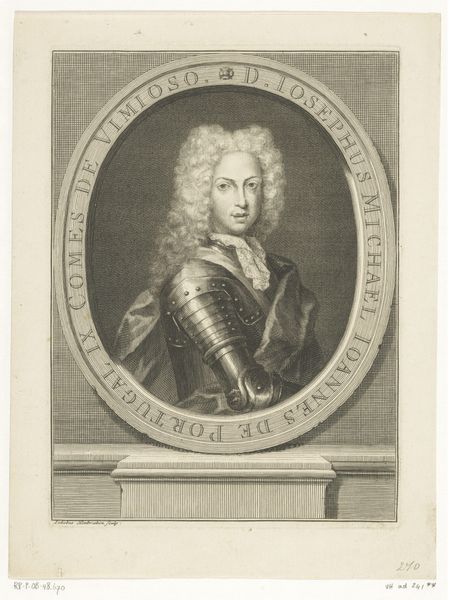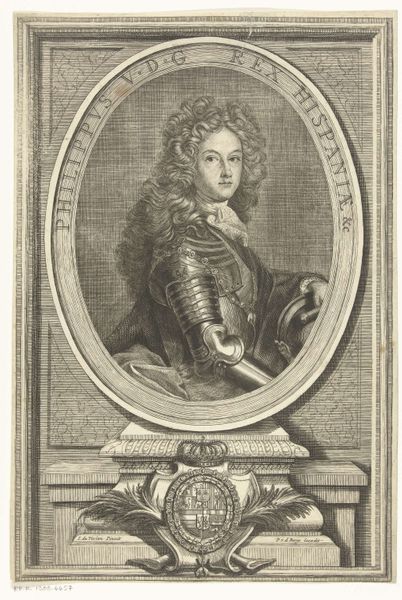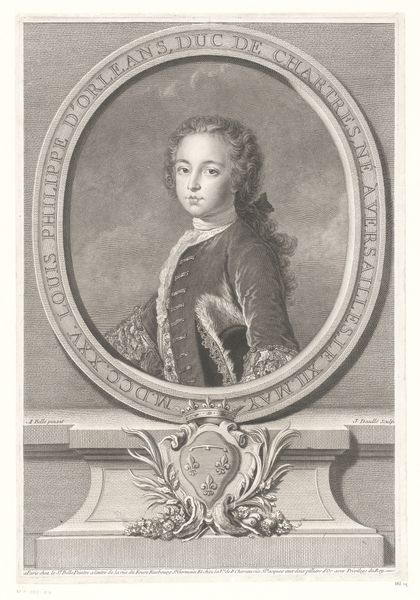
engraving
#
portrait
#
baroque
#
old engraving style
#
pencil drawing
#
history-painting
#
engraving
Dimensions: height 140 mm, width 89 mm
Copyright: Rijks Museum: Open Domain
Curator: This is Bernard Picart's 1720 engraving, "Portrait of Louis I, Prince of Asturias," currently held here at the Rijksmuseum. Editor: It has a certain…formal yet vulnerable feel. He's in armor, but the overall effect, amplified by the Baroque framing, almost softens the display of power. Curator: Picart’s approach reflects the shifting dynamics within European courts at the time. Louis, heir to the Spanish throne, was meant to project strength and legitimacy. However, these depictions served political agendas as much as representing individuals. This piece comes in the context of the war of Spanish succession and succession crises within Europe at this time. Editor: Right, the symbols! The armor traditionally speaks of courage and martial prowess, crucial virtues for a prince. And he's swathed in symbols of authority. Still, that wispy lace collar and cherubic face hints at innocence, doesn't it? Does that mean it also references more recent conflicts, and even internal doubts around Louis's youth and abilities to command in times of potential turbulence in Europe? Curator: Precisely. Courtly portraits had a tight relationship with contemporary cultural events at this time. His early death not long after becoming king further cements this portrait as an image of potential, abruptly curtailed by political machinations. The inclusion of landscape features would be common in dynastic portraiture. Here it emphasizes the vastness of territory associated with the crown of Spain, a territory Louis was expected to rule. Editor: The landscape grounds the figure, but the frame feels slightly tight. Perhaps suggesting both authority and potential instability. I keep thinking of all the other portraits of rulers and leaders that look a little similar at the time - each subtly suggesting different ideals or aspirations. Curator: Exactly. Picart provides a rich image of a leader poised at the threshold of immense power, yet his choices subtly betray the undercurrents of dynastic vulnerability prevalent at the time. Editor: A great reminder that portraits aren’t mere records, but very crafted narratives, offering us insights far beyond the subject’s likeness.
Comments
No comments
Be the first to comment and join the conversation on the ultimate creative platform.
